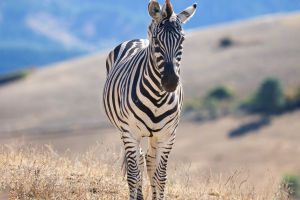The showy feathers, powerful curved hooked beak, and divine posture highlight the parrot's uncommon intelligence and wisdom, giving us a strong impression and fantasy about parrots.
However, as one of the most familiar birds to the public, do we really know parrots?
Did you know that there are more than 400 species of parrots existing in the world? They are widely distributed and mainly live in the tropical rainforests and savannas of Southeast Asia, South Asia, Central America, South America, and Australia. Nine of these parrot species are also found in China. Parrots have a long lifespan and high IQ.
According to research, high IQ may help parrots better handle complex social relationships. In addition to their long lifespan and high IQ, what other characteristics do parrots have? Although we often see parrots kept singly, parrots are, in fact, typical of flock animals.
In the wild, groups of parrots forage and feed together during the day, exchange information, and fly back together at night to rest collectively at their nightly lodgings. Close partners groom each other's feathers and feed each other. They then create their own little families and work together to nurture the next generation.
Few healthy parrots in the wild are solitary because group life means physical and emotional security for parrots. Parrots are born with unusually high levels of energy. In the fall, for example, crimson rose parrots spend nearly half of their daylight hours foraging for food and eating, and the rest of their time alerting, grooming, climbing, flying, breeding, and engaging in other behaviors, so parrots have a very full daily life!
But what you may not know is that parrots, as a group of endangered birds on the list, have long attracted the attention of authorities and conservation organizations around the world. According to the International Union for Conservation of Nature Red List of Threatened Species (IUCN Redlist), nearly one-third of the 404 existing species of parrots have been assessed as threatened.
The two main culprits of the parrot's endangerment are the destruction of pristine habitats due to deforestation and the hunting and smuggling of wild parrots due to the pet trade. Nearly 70% of parrot species (276 species) have records of international trade in wild individuals for commercial purposes, including 54 threatened species.
For the purpose of protecting wild parrot populations from extinction due to uncontrolled hunting and trade, all but four species of parrots (cockatoos, peach-faced peacocks, budgerigars, and red-collared green parrots) have been listed by CITES as either prohibited from international trade or regulated.
However, the huge market demand and profits do not prevent poaching and illegal trade. Despite being protected by strict CITES export restrictions, many species of parrot populations continue to decline, such as the African Grey Parrot.
It is true that parrots are very beautiful and intelligent, but this is also the original sin for which they suffer. Studies have found that the richness of a parrot's plumage, ability to speak, etc., is positively correlated with its vulnerability to predation.
However, it is important to understand that parrots have no history of domestication, and they have a strong wild nature. Additionally, due to the frequent parrot pet trade (especially the illegal trade), most parrots used as pets are themselves from the wild or have only been out of the wild for a few generations. As a result, they are more than capable of breaking away from some of their wild survival instincts and behaviors.
Obviously, it is difficult to provide captive environments that meet all of the parrots' needs, such as flight, mobility, and a rich diet.
What needs attention is that harm caused by neglect and ignorance is everywhere around us!


